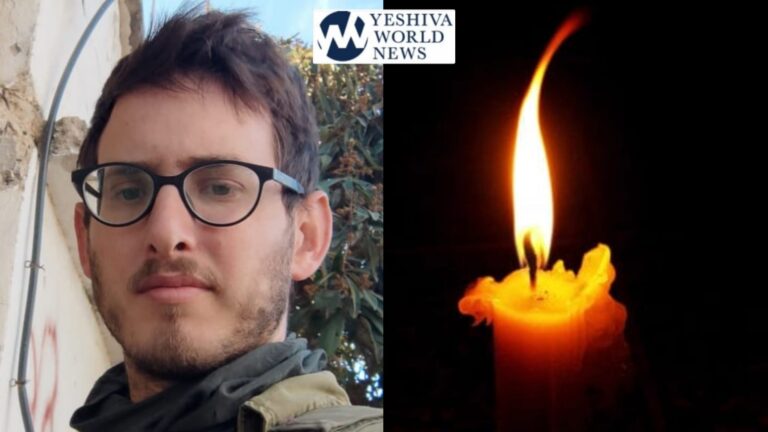By Rabbi Yair Hoffman for 5tjt.com
For those who do not wish to read this entire review – it is an extraordinary work. Go out and buy it now. For those who wish to read the review, continue.
This one-volume 596 page work (with an additional 57 page index) by Rabbi Doniel Neustadt is perhaps the most practical sefer on Hilchos Shabbos that is available today. Rabbi Neustadt has a remarkable track record for writing halacha in a clear and cogent manner. He also writes in an organized and interesting manner. The work is comprehensive – with 124 chapters perfectly organized so that the reader can easily look up the halacha. Rav Neustadt cites rulings from the full gamut of Poskim.
PLEASE HELP A WONDERFUL BAALEI TESHUVAH COUPLE GET MARRIED!
https://thechesedfund.com/zechornilah/weddingoftwobaaleiteshuva
Rabbi Neustadt has organized the halachos in the book based up on time – Erev Shabbos, Shabbos evening, Shabbos morning, Shabbos afternoon, etc. Anything that could be categorized by when the halachos apply – was placed in Book One. All other halachos were placed in Book Two (within the one volume). It is a simple method of organization – but it is brilliant.
Rabbi Neustadt’s footnotes are also precisely written, attuned to the subtleties and nuances of the acharonim under discussion. This is something relatively rare in an English sefer. This author would like to suggest that the remarkable precision is on account of the fact that Rabbi Neustadt brings more to the table than the average author of an English language sefer.
How so? Rav Neustadt was the author and guiding force behind the contemporary application sections of the Ohr Olam sections of their Mishna Brurah Project (which for Hilchos Shabbos alone comprise eight volumes in total). One of the goals of the Ohr Olam project is to make the Mishna Brurah fully comprehensible to the English speaking audience – replete with a fully unfolded and thorough understanding of the view of the Mishna Brurah.
The Sefer is filled with practical applications.
- Can automated bill payment be implemented – even though it will eventually be performed on Shabbos day (p. 370)? Rabbi Neustadt rules it is permitted.
- A Chazzan repeats words in a bracha to make for a more pleasing tune (in his opinion). Does one answer Amain? Rav Shlomo Zalman Auerbach zt”l is quoted as ruling that one does not. Rav Moshe Feinstein zt”l is quoted as ruling that one does – if it doesn’t change the meaning of the bracha. Both, of course, hold that it is forbidden for the Chazzan to do so. But who knew of Rav Shlomo Zalman’s view?
- You are gluten-free. What do you do about Shabbos morning Kiddush? See page 269.
- Need to use Fed-Ex over Shabbos? The Chofetz Chaim in his Biur Halacha rejects Amirah l’amira, asking a gentile to ask a gentile (307:2 “V’Afilu”, but Rabbi Neustadt gives us the specific parameters of when and how we can rely on Amira l’amira. He cites Rav Falk’s sefer on other acharonim that justify it. Years ago, this reviewer received the same psak from Rav Scheinberg zt”l. Rabbi Neustadt’s exposition in his footnotes (page 28) on the subject is the most thorough treatment of the issue one can obtain in English.
- Want to know about what to do for a lightbulb left on in a refrigerator over Shabbos? Turn to page 144 in this remarkable Sefer. It is interesting to note that Rav Chaim Kanievsky shlita disagrees with the near universal heter expounded by the Mishna Brurah about instructing a gentile to do something even when a psik raisha on a de’oraisa is involved. All this is found in Rabbi Neustadt’s remarkable footnotes.
- How do you reheat cold cooked food on Shabbos without violating any of the Rabbinic prohibitions? See page 284.
- Do you like eggs and onions, but your son-in-law has questions about how you prepare it? Here’s how to do it right and at the same time give yourself a brush-up on the essential elements of the underlying halachos to save face. (Just make sure that you hide the sefer so that your son-in-law doesn’t see where you got it from.)
In short, this extraordinary Sefer has an appeal for both the layman and the scholar. There is information contained in this work, of the views of Gedolei HaPoskim – of which even seasoned Poskim are unaware. Each topic is explained clearly and cogently.
CRITIQUES
Are there critiques? Yes, perhaps, but they are near negligible. On page 269, there is perhaps a typo which may lead people to mispronounce the word makom. More significantly, in Chapter 81 when dealing with Treating a Life-Threatening Situation, Rabbi Neustadt rules that when time is not of the essence – a malacha should be done with a shinui – a change. This is certainly the authoritative view of the Mishna Brurah, and should be followed by individuals. But what about Hatzolah organizations?
Should Hatzolah organizations be more lenient and follow the view of the Aruch HaShulchan (who rules that a shinui is not required) in light of the fact that some Hatzolah members may err and possibly misjudge the situation? Rav Dovid Feinstein zt”l ruled that the Posaik of each Hatzolah organization should decide this matter himself for his own organization. In Lakewood, Hatzolah rules stringently. In Flatbush and Queens they rule like the Aruch haShulchan. In this reviewer’s opinion this idea should have been included.
CONCLUSION
This sefer is a necessary addition for any home that wishes to keep up to date about the hundreds of practical questions that arise in regard to Hilchos Shabbos. It is also a sefer that improves one’s Torah learning. Yeshivos and Beis Yaakovs across the country should consider making this sefer the textbook that is used to teach high school students Hilchos Shabbos.
The author can be reached at [email protected]
PLEASE HELP A WONDERFUL BAALEI TESHUVAH COUPLE GET MARRIED!
https://thechesedfund.com/zechornilah/weddingoftwobaaleiteshuva











